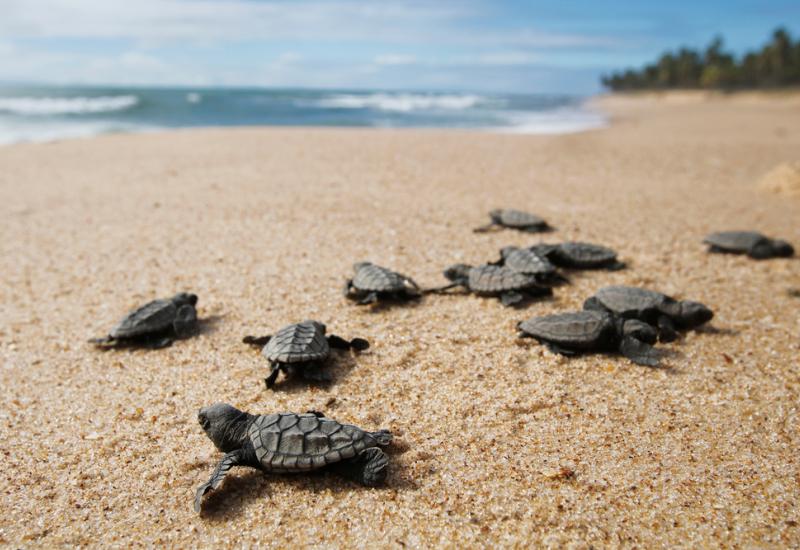How Often is New Life Discovered in the Ocean?

Shutterstock.com/guitar photographerThe deep sea is a common habitat for true discoveries of new species.
Question: How often is a new marine species discovered? - Diana L., San Francisco
Answer: There are hundreds of new ocean species described by scientists every year!
First of all, let me back up and explain the difference between “discovering” and “describing” a new species. In many cases, a formal description by western scientists comes after decades (or centuries) of locals already knowing about a species; a scientist describing a new species doesn’t necessarily mean that the scientist was the first human to ever lay eyes on that species. Also, lots of species are described from long-existing samples that have just been sitting in storage, waiting for scientists to get around to processing them. Psuedobatos buthi, for example, made the news when the graduate student who described it posed for a hilarious maternity-style photoshoot with her specimens, which had been sitting in the UCLA fish collection for decades. (This isn’t unusual, it takes a little over 20 years, on average, between when a species is first collected and when it is described scientifically.)
There are cases where new species are discovered by scientists, by which I mean the scientist very likely was the first human ever to see that organism. The most common type of habitat where this happens is the deep sea, because the deep sea is difficult to access and scientists are (for now) basically the only people who can get there. But many new species descriptions aren’t technically species discoveries.
So how many new ocean species are described every year? A 2012 analysis of species recovery data from the World Register of Marine Species, an authoritative and comprehensive database of all recognized ocean species, found that, for the last century or so, about 600 to 1,000 new ocean species have been described by scientists every year! A 2017 post on the Conversation notes that in recent years, the number is closer to 2,000 new ocean species discovered every year!
And this isn’t just deep-sea weirdos or microorganisms. As past Ask a Marine Biologist columns have noted, there’s a new species of shark, skate, ray or chimera described every few weeks and scientists are still describing new species as large as whales! There may be as many as 100 million species in the ocean—and so far about 200,000 recognized species have been described.
Ask a Marine Biologist is a monthly column where Dr. David Shiffman answers your questions about the underwater world. Topics are chosen from reader-submitted queries as well as data from common internet searches. If you have a question you’d like answered in a future Ask a Marine Biologist column, or if you have a question about the answer given in this column, email Shiffman at [email protected] with subject line “Ask a marine biologist.”

Courtesy ImageDavid Shiffman
Dr. David Shiffman is a marine conservation biologist specializing in the ecology and conservation of sharks. An award-winning public science educator, David has spoken to thousands of people around the world about marine biology and conservation and has bylines with the Washington Post, Scientific American, New Scientist, Gizmodo and more. Follow him on @WhySharksMatter on Twitter, Facebook and Instagram, where he’s always happy to answer any questions about sharks.
The views expressed in this article are those of David Shiffman, and not necessarily the views Scuba Diving magazine.









